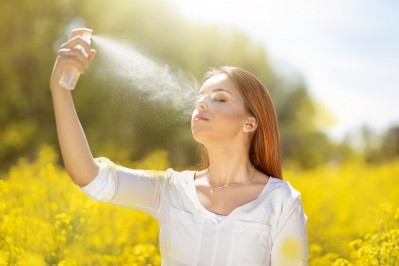Selling cosmetics on TikTok Shop: 4 expert tips for success

New data from consumer insights specialists NIQ revealed that UK beauty consumers tended to spend £33 more on cosmetics via the social media marketplace TikTok Shop than the average online cosmetics buyer has done over the last 12 months.
The insights company said that this means that there is enormous potential for beauty brands - both emerging and established - to harness the platform to unlock their next stage of growth.
According to NIQ’s Global VP Claire Marty, the digital era we now find ourselves in has “transformed the beauty industry and TikTok is increasingly holding a lot of sway in the sector.”
“The platform has now amassed over one billion users globally and has given rise to ‘BeautyTok’. In fact, 74% of TikTok users agree that content on TikTok has transformed their beauty game,” said Marty.
“However, we understand it can sometimes be a bit of a challenge to get the formula right. TikTok is so well known for its algorithm which never favours a singular trend for too long,” she continued.
“It also delivers a constant stream of ideas and inspiration. This can be both advantageous to your brand, but also risky as your content can easily get lost as new videos and trends emerge. It’s therefore crucial that you are placing focus in the right areas.”
To help beauty businesses that are trying to navigate selling on TikTok shop and ensure they place their focus in the right areas, Marty has shared the following four insights:
1. Remember: it’s Not Just for Gen Z!
“There’s a misconception that TikTok primarily consists of young audiences. Yet this is quite wrong – especially when it comes to shoppers on TikTok Shop.
NIQ data shows that older consumers are active and spending on the platform. In the UK, the average basket spend for cosmetics on TikTok Shop for Gen Y is £51, which is higher than the average for Gen Z (£48). This is a trend we’re noticing across markets.
In the US, the 18-24 age bracket only accounts for 13% of the total spend in the beauty and personal care category on TikTok Shop, versus 25.7% for those aged 25-34 and 16.7% for 45-54s.
Brands on the platform need to ensure they are catering towards different demographics. Tailoring content to young and older audiences will be valuable in capturing their attention and their basket spend.”
2. Connect with audiences through authenticity
“Our data shows that in the UK, Sol de Janeiro is among the most successful fragrance brands on TikTok Shop, despite the company not selling directly on the platform. Its products are sold by some of TikTok’s top sellers in the UK, including LookFantastic and Cult Beauty.
The brand was a mainstream early adopter on TikTok Shop in the US – now emerging as one of the most highly viewed brands on the platform with rave reviews. However, the key to its success is through its authenticity and ability to create engaging viral video content that resonates with consumers and builds a strong brand identity.
This authenticity can help audiences feel a real sense of connection that converts into sales. Think about your brand’s history, mission, purpose, and values, with a narrative structure that brings it to life. Every brand has a story to tell, and if done right under a compelling angle, it can foster a sense of brand community.”
3. Invest in ‘hero’ products
"Almost every brand has a product that puts them on the map. In China, our data shows that on Douyin (TikTok's name in China), hero products represent 61% of sales for growing skincare brands, compared to just 30% in cosmetics stores. This trend is also evident in the UK and US. On TikTok in the UK’s personal care industry, for example, certain standout products account for a large share of a brand’s value on the platform.
Understanding the popularity of your bestsellers informs future product development and maximises the chances of successful product extensions. Your hero product backed by engaging content, and one that is complemented by well-conceived product extensions can seriously accelerate your sales growth.”
4. Choose wisely which trends to jump on (and which ones to avoid)
“It’s easy to be swept up by the platform’s hot and fun trends – this is where TikTok owes its success after all. However, it is best to exercise a selective approach which trends to hop onto and which ones to avoid.
Smaller brands may be able to use greater agility to be ‘on-trend’ but in the beauty world the key is identifying trends that match the brand identity and target consumer to ensure the products land authentically. For example, skin care products marketed on Douyin by small Chinese brands that highlight and hashtag certain ingredients accounted for 38% of their market share.
TikTok is an exciting platform – for consumers as well as brands. The constant stream of new content and inspiration grant exposure to small and emerging brands as well as household names. This level playing field gives a real chance to challenger brands and disruptors in the beauty and personal care space, meaning there are always new beauty brands to discover.
However, having a presence on the platform is not enough. Like any marketing activity, it’s crucial to have the right insights to best understand how any brand can maximise its potential on the platform. By harnessing this insight and using it to deliver the right creative content and strategy, brands in this space will have a chance to stand out among the right audiences and reap the rewards.”


![Melvita is rolling out a brand new look with revamped stores and communications in APAC. [Melvita]](/var/wrbm_gb_food_pharma/storage/images/_aliases/wrbm_tiny/publications/cosmetics/cosmeticsdesign-asia.com/headlines/brand-innovation/melvita-debuts-new-look-upgraded-stores-for-apac/17518501-1-eng-GB/Melvita-debuts-new-look-upgraded-stores-for-APAC.jpg)
![[Getty Images]](/var/wrbm_gb_food_pharma/storage/images/_aliases/wrbm_tiny/publications/cosmetics/cosmeticsdesign-asia.com/headlines/market-trends/apac-hair-care-consumers-will-resonate-with-bio-inspired-hair-care-as-it-trends-towards-naturals/17517526-1-eng-GB/APAC-hair-care-Consumers-will-resonate-with-bio-inspired-hair-care-as-it-trends-towards-naturals.jpg)
![Incospharm uses novel filtration method to develop a range of 10 plant-based exosomes. [Getty Images]](/var/wrbm_gb_food_pharma/storage/images/_aliases/wrbm_tiny/publications/cosmetics/cosmeticsdesign-asia.com/headlines/formulation-science/plant-based-exosomes-incospharm-uses-innovative-filtration-technique-to-develop-cica-dragon-fruit-derived-exosomes/17520889-1-eng-GB/Plant-based-exosomes-Incospharm-uses-innovative-filtration-technique-to-develop-CICA-dragon-fruit-derived-exosomes.jpg)

![Franz Skincare has developed patches that claim to offer broad-spectrum sun protection to address the challenge of sunscreen reapplication. [Franz Skincare]](/var/wrbm_gb_food_pharma/storage/images/_aliases/wrbm_tiny/publications/cosmetics/cosmeticsdesign-asia.com/headlines/brand-innovation/k-beauty-sunscreen-patch-aims-to-solve-consumer-reapplication-challenges/17505190-1-eng-GB/K-beauty-sunscreen-patch-aims-to-solve-consumer-reapplication-challenges.jpg)

![Marinova highlights the cosmetic potential of fucoidan’s anti-inflammatory and wound-healing properties in addressing chronic skin conditions. [Getty Images]](/var/wrbm_gb_food_pharma/storage/images/_aliases/wrbm_tiny/publications/cosmetics/cosmeticsdesign-asia.com/headlines/business-financial/marinova-eyes-opportunities-in-wound-healing-and-inflammation/17515969-1-eng-GB/Marinova-eyes-opportunities-in-wound-healing-and-inflammation.jpg)
